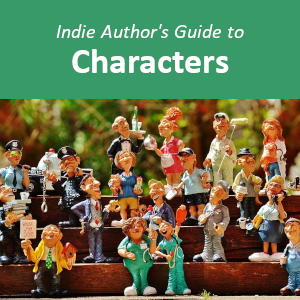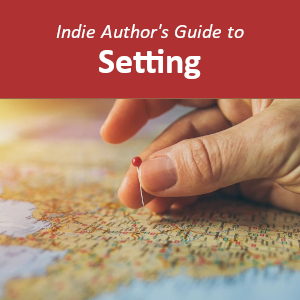A book’s structure is often one of the first things that an author will give significant attention to. As it is used in this guide, novel structure refers to the technical aspects of a book, such as narrative voice and verb tense. For an author, it is important that these aspects of your book are consistent. Inconsistent verb tense, for example, will undoubtedly result in grammatical errors, comprehensibility issues and, ultimately, poor reviews. The pace and writing style of your book can also greatly affect a reader’s experience. How you choose to structure and style your novel is ultimately up to you as the author, but you may find that the following charts will assist you in effectively preparing and developing your book.
Point of View
The point of view of your story will greatly influence not only how you write it, but how it will be received by your audience. Point of view often comes down to who the narrator of your story is. Will your book be narrated by the protagonist or other characters? Or will it be narrated omnisciently? While there isn’t necessarily a right or wrong when choosing your book’s point of view, some genres lend themselves to being told from a specific perspective. Thus, if you’re not sure which point of view to use in your novel, you might want to compare what narrative voices other books in your genre employ. Additionally, while you’ll want to avoid inconsistency in employing the point of view for your novel, you might also note that some books alternate their point of view by chapter or section.
| POINT OF VIEW | DESCRIPTION | PRONOUNS | EXAMPLES* |
|---|---|---|---|
| First-Person | The first-person point of view is a story told from a specific character’s perspective, or sometimes the narrative will switch characters in each chapter. First-person is useful in helping readers to relate to and immerse themselves in the emotions of the characters. This point of view is commonly seen in young adult books and romance novels. | I, We | The Hunger Games is written in first-person point of view. |
| Second-Person | Second-person point of view is the most interactive, making the reader a character in the novel. This point of view is rarely used in novels. | You | Choose Your Own Adventure books are written in second-person point of view. |
| Third-Person Limited | Third-person limited point of view follows a specific character throughout the story, highlighting their thoughts and experiences. This point of view can be found in many mystery, thriller and science fiction novels. | He, She, They | Harry Potter and the Chamber of Secrets is written in third-person limited point of view. |
| Third-Person Omnicient | Third-person omniscient point of view tells the story of multiple characters, and shares the experiences of each of them. This point of view can be seen in complex dramas and epic fantasy novels. | He, She, They | The Lord of the Rings: The Fellowship of the Ring is written in third-person omniscient point of view. |


Verb Tense
Equally important to determining your book’s point of view is deciding on your book’s tense. Inconsistent verb tense can confuse and irritate readers, so it is necessary to give consideration to your narrative tense before you begin writing your novel.
| TENSE | DESCRIPTION | VERBS | EXAMPLES* |
|---|---|---|---|
| Past Tense | Past tense tells a story that has already occurred. This is the most conventional tense for modern novels, and readers are generally most comfortable reading past tense. | Was, Were, Said | The Harry Potter series is written in past tense. |
| Present Tense | Present tense tells a story as it is occurring. This verb tense lends itself well to books that feature a lot of action. | Is, Am, Are, Says | The Hunger Games is written in present tense. |
| Future Tense | Future tense does not lend itself well to fiction novels and is rarely ever used as the primary verb tense. | Will Be, Will Say | N/A |


Writing Style
Discussions on writing style often break down the topic into four primary categories: expository, descriptive, persuasive, and narrative. Assuming you are writing fiction, you will be writing a narrative with some descriptive portions. However, authors also need to give attention to the style of their prose. Prose may be identified by the colorful labels defining its two extremes, and most writers fall somewhere in the middle, employing a balance of the two types in their books.
| PROSE TYPE | DESCRIPTION | EXAMPLES* |
|---|---|---|
| Beige Prose | Beige Prose focuses on simple words and direct, concise explanations. Beige prose may be seen when describing the physical characteristics of characters, or anytime a straightforward description is sufficient. | The Hunger Games: “That’s why my mother and Prim, with their light hair and blue eyes, always look out of place.” (describing family members) |
| Purple Prose | Purple Prose is very ornate and descriptive, using many adjectives, adverbs and metaphors. Purple prose may be effective in instances where you are describing something the reader is unfamiliar with or when you want to convey powerful emotions in the reader. | The Hunger Games: “Men and women with hunched shoulders, swollen knuckles, many who have long since stopped trying to scrub the coal dust out of their broken nails, the lines of their sunken faces.” (describing coal miners living in the Seam) |


Story Pacing
Pacing refers to the speed and rhythm of your book, including how quickly events are unfolding and how many subplots are being developed at a time. The pacing of your story is a critical factor in keeping your audience interested and engaged in your book. If your pace is too slow, it could cause readers to get bored, and if your pace is too fast, readers may easily get confused and have trouble keeping up. Pacing will also vary within a story, speeding up during action sequences and slowing down during emotional scenes. There are a number of literary devices that authors can implement in their story to control the pacing.
| PACING TACTIC | DESCRIPTION |
|---|---|
| Dialogue | Using dialogue between the characters, as opposed to simply describing their conversations, adds energy to a scene. |
| Scene Changes | Switching characters, perspectives or locations with each chapter can keep a developing storyline fresh and exciting. |
| Section Lengths | The length of your chapters, paragraphs, and even sentences can affect the pace of your novel. For example, mysteries, thrillers and young adult books often feature shorter chapters in order to keep the plot moving and enhance the intensity of a reader’s experience. |
| Summarizations | Offering a summary of a character’s backstory or of an extended time period will keep readers from getting bored with tedious details about auxiliary or extraneous information. |
| Suspense | Adding tension and suspense, both within and across chapters, heightens readers’ curiosity and interest, keeping them engaged throughout your story. Ending chapters with a cliffhanger, an unresolved or suspenseful scene, is a common tactic to leave readers eagerly wanting more. |
| Word Choice | Using emotive and concise verbiage in your novel will nurture the focus and attention of your readers. |


Predetermining the structural aspects of your novel, including the narrative voice and verb tense, will provide a solid foundation for your story. And employing appropriate writing styles and pacing throughout your book will enhance the reading experience for your audience. Thus, it is very important for authors to give attention to their novel’s structure and style. By using the tools and information mentioned in this article, you’ll be fortified to write a book that is enjoyable to read and fully engages readers.
* Many of our examples are from the Harry Potter series and the Hunger Games series, as these are some of the most popular novels of our current century and these books are likely familiar to most authors.
YOU MIGHT ALSO LIKE









